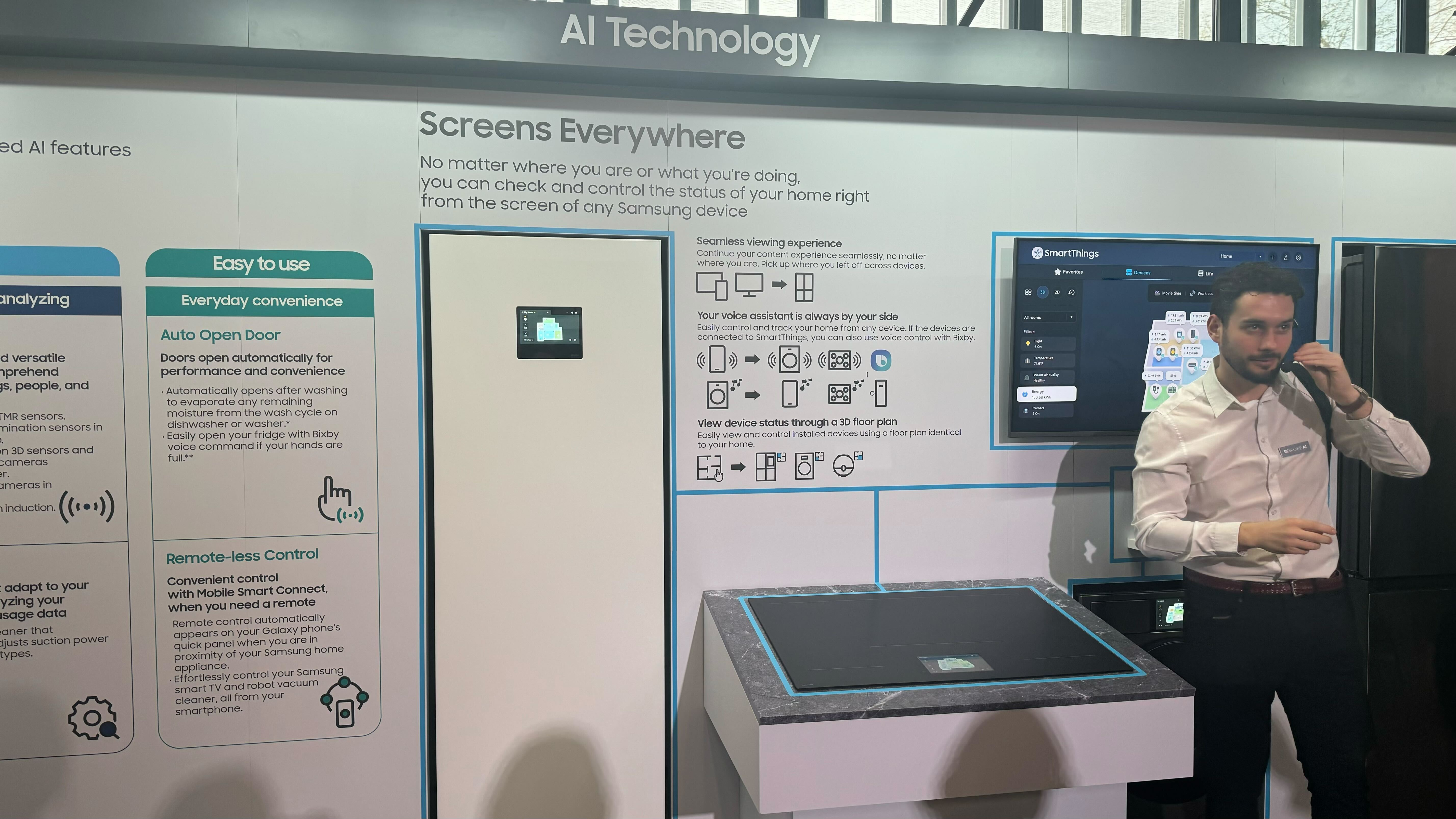With screen fatigue at an all-time high, the prospect of a smart home with even more screens might sound counterintuitive – but I think Samsung is onto something with its new 'screens everywhere' approach to smart appliances.
During its global launch event on 3 April, Samsung demonstrated a host of new smart appliances, including some featuring a new seven-inch LCD AI screen to "realize the idea of screens everywhere".
At first, I was slightly incredulous; as someone who’s struggled with phone addiction and spends most of their time looking at screens, I’m not particularly thrilled with the idea of my home being filled with even more of them.
As I walked around the demo room and spoke with Samsung’s representatives, however, I started to come around to the idea – here’s why.
Hands-free at home
Our phones, our tablets, and now even our watches have become a lifeline to the outside world, our primary source of entertainment, and our oracle of information. More than just a way to help us navigate the outside world, over the past fifteen years they’ve become a mainstay of how we operate at home, too.
So how are built-in appliance displays going to shift this dynamic? Samsung’s in-appliance screens can show your home’s floor map and connected devices, as well as providing useful information about appliances and even energy usage. Larger displays like the Family Hub used in some of Samsung’s fridges also include entertainment services, recipe books, and family planners, and can even offer the ability to easily share content directly from compatible phones.
I spoke with Tanya Weller, Marketing Director for Samsung Home Appliances in the UK, to find out her take on why displays are a huge part of Samsung’s home strategy.
“By creating little hubs in other places, can be freer in your home, and access information anywhere. It’s also just more of a shared experience,” she explains. “It’s also about ease of use; if you’re walking around the kitchen, you don’t want to have your phone in your hand the whole time. Hopefully, you’d leave it on the side.”
While Weller says a hands-free home experience wasn’t the goal of Samsung’s screens everywhere approach, which focuses more on convenience, efficiency, and information, she sees it as a natural and positive byproduct.
“I do think reduced small screen time is a good idea. Thinking about my personal life, it’s crazy; I’m asking my son not to use his phone and go on his Xbox instead because at least he’s talking to people there,” she remarks with a laugh. “It sounds awful, but I think we’ve got to an era now where screens are a massive part of our lives.”

Screens are inevitable
It took until I got home from my trip to Paris for Samsung’s Bespoke AI event for me to register how that experience could work. With bundles of laundry in my arms, I staggered through my flat while also trying to text my mom to let her know I’d arrived home safely while also turning on my lights.
With one of Samsung’s smart washing machines, I could not only use Bixby to open the appliance’s door for me, but also control my smart home, communicate with my loved ones, and multitask much more efficiently and without my phone in hand.
While gadgets like the Rabbit R1 and the Humane AI pin promise a less screen-filled mobile device market, other device types are starting to become increasingly display-led, and it’s a trend I doubt we’ll buck any time soon.
In Samsung’s case, I can begin to see the justification for more screens in appliances; there’s useful information they can display, it’s easier to walk around at home without being glued to your phone, and it eradicates the need for costly single-purpose devices like the best smart displays.
Plus, given Samsung’s wider approach to boosting Bixby with Generative AI and what seems to be a move to improve the SmartThings experience while negating the need for purpose-built smart speakers and displays, it looks like the “screens everywhere” approach is here to stay.
You might also like
from TechRadar - All the latest technology news https://ift.tt/IMUFnsu

0 coment�rios: